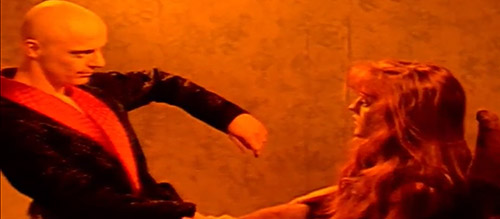Blood Junkies (1993) Review
Blood Junkies (1993)
Director: Bruce Naughton
Screenwriter: Bruce Naughton
Starring: Sean Hay, Mary Goonan
Although nowadays low-budget feature films are becoming increasingly more common, it could not have been any different back in nineteen ninety-three when Blood Junkies was released. Inspired by Robert Rodriguez’s micro-budget film El Mariachi, released the year before, screenwriter-director Bruce Naughton and friends ganged together to make, perhaps, the most cult film that Scotland has to offer.
To really understand the cult nature of Blood Junkies however, one must know its story.
Naughton’s hopes for the film were to make a straight-to-video horror flick that would garner enough commercial attention to make it a decent profit. It looked as though that plan might have worked too, when Blood Junkies was set for release through a large US horror film distributor. Sadly, it never came to fruition. It was soon revealed that the distributors were in fact a fundamental religious organisation, buying the rights to horror films in order to ensure they were never released to a public “susceptible to possible satanic possession”.
Lost for 20 years, the only remaining copy of Blood Junkies was eventually discovered on a cutting-copy video tape in a crew member’s attic. Although missing a few reels, the film was restored and finally released to the public earlier this year via the YouTube channel Tartan Features Year Zero Filmmaking.
The film itself follows a vampire (Sean Hay) who feeds on the heroin addicts of Edinburgh and the young nurse (Mary Goonan) who must stop him. The premise was unique for its time and allowed the filmmakers to produce a gritty take on both heroin addiction and Scotland’s capital city (a city that was labelled as the AIDS capital of Europe, thanks in no small part due to its problems with heroin addiction). It was a take that later films like Trainspotting (1996) would gain notoriety for presenting, but that’s not the only unique direction that Blood Junkies would go in…
Heavily inspired by previous vampire flicks The Lost Boys and Near Dark, Blood Junkies created a much darker type of vampire, the likes of which would not be seen again until Blade (1998).
Using nineties Edinburgh as a backdrop for the film was a choice proven to be inspired, the era in which the city was at its worst bringing its medieval architecture and its juxtaposing contemporary dereliction to the forefront of the mind, enhancing the thematic explorations of the degenerative disease AIDS and the opposing invincibility of the common vampire in western fantasy. It also made for a dark and consuming environment for the antagonistic vampire to exist within, the character’s quite literal portrayal of the anxieties of the AIDS epidemic finding space to be gruesome and dangerous in amongst the film’s strong campy elements.
It is perhaps this mix of dark and close-to-home themes, and the film’s stylistic and tonal campiness, that make Blood Junkies a film very much in the image of the typical cult horror mega-success, but this light-hearted touch is also of detriment to a story which feels like it could have had a much stronger message and hit heights way beyond that of a cult-status horror film.
The narrative of Blood Junkies is well written so far as cult micro-budget horrors go, meaning that although characters can feel as though they lack depth at points, and the middling section does feel rather derivative, the unraveling of the events on screen play out at an enjoyable pace, intrigue surrounding the protagonist’s involvement never ceasing despite the horrors that are this film’s selling point.
Overall, Blood Junkies is far from a lost masterpiece; a film that doesn’t quite master any of the directions it takes itself in and instead acts as a precursor of the greatness to come. It does, however, remain important. In a time where the journey of the Scottish film industry continuously hits bumps in the road, the story of Blood Junkies doubles as both a representation of the spirit of the film industry in Scotland as well as a snapshot of how far it has come; a piece of cinema that may not stand the test of time like the vampire has, but is a worthy edition to cinema’s overall contributions to wider common fables nonetheless.
Score: 14/24


